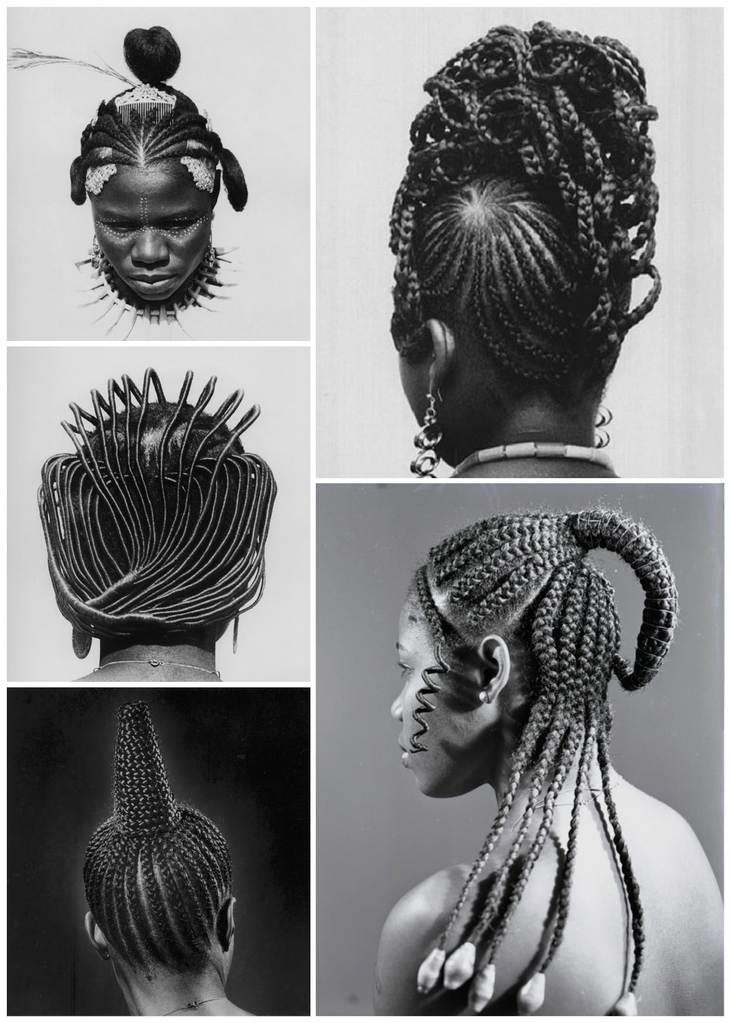The Best Products to Use for Braiding, What to Avoid, + The History of Braids [Natural HairCare Tips]
Did you know that the origins of braiding hair dates back to 3500 B.C?! Studies show that this tradition of braiding styles started in Africa and played a significant role in grooming and African beauty customs. However, many ancient African tribes till this day use braids for more than just a trend. History shows us that braiding styles were used to show a variety of things including a person's age, send messages, distinguish marital status, and also to signify a person's status within his or her community. These styles were worn by both men and women. Some say that the more elaborate the style, the more significant they were in their respective communities.


Traditional hair braiding is a custom that has been passed down from generation to generation and can be extremely time consuming. It is a time that many women use till this day to bond with their children, gossip, tell stories, and talk about life lessons.

Even with the historical significance of braiding, these styles were not always accepted in many modern day professional settings or even high schools! But as a result of the evolution of the law, more professions have learned to accept and respect these traditional hairstyles.
Although the origins of braiding come from Africa throughout history you will find cultures of all kinds rocking these traditional styles.

Despite the controversy surrounding other cultures wearing these traditional braided styles, people of all ethnicities appreciate its beauty and versatility.

Today women with kinkier hair types wear braids for more than just a fashion trend. Many women wear braids as a protective style to protect their natural hair from heat damage and humidity. Also wearing braids can better define your curl pattern, keep your hair nourished, and help your hair grow. However if done incorrectly wearing braids can lead to damage of the hair follicles which may cause permanent hair loss and balding scars.
WHAT TO AVOID + THE BEST PRODUCTS TO USE
Selecting a natural oil before braiding is imperative in the braiding process as the oil you select will help nourish your scalp and hair strands while they are in the braided style.
Although the scalp produces its own natural oil, called sebum, the spiral structure of textured hair makes it difficult for sebum to travel evenly throughout the hair strands. This is why curly hair is drier and more fragile than any other hair type.
Supplementing your hair with Pure Unrefined Haitian Black Castor Oil when braiding will protect your hair and keep it moisturized. Haitian Black Castor Oil is packed with Omega Fatty Acids, Vitamin E, and other nutrients that'll make you hair grow healthy and strong. Also polishing off your braids with Caribbean Secrets Cosmetics Moisturizing Mist will give your braids additional moisture and shine.


Heavy synthetic oils such as petroleum and mineral oil should be avoided when braiding the hair because they will cause buildup, leave unwanted residue, and attract dust and dirt to your hair. These synthetic ingredients can cause buildup and blockage in your scalp because they do not have the ability to absorb into the scalp or hair shaft like natural oils can.
Also, please be sure not to braid your hair too tight because too much tension on the hair can cause serious damage to the hair follicles. Issues such as alopecia, scarring, and damaged hair may occur if there is prolonged tension in the hair from tight braids. So if your hair dresser is known to be heavy handed let them know to take it easy or find someone else to braid your hair!
In addition, avoid braiding your textured hair while it is wet. Your hair should be dry because when curly hair is braided while wet, it will shrink and recoil as it dries, which may create excess pulling and scalp tension. In turn, the tension can lead to breakage or hair loss from pulling or twisting.
We hope that you found this blog informative!
Stay Sexy and always remember. . . "The deeper the secret, the better the beauty."

Sources:
Milady Standard Natural Hair Care & Braiding 1st Edition by Diane Carol Bailey
